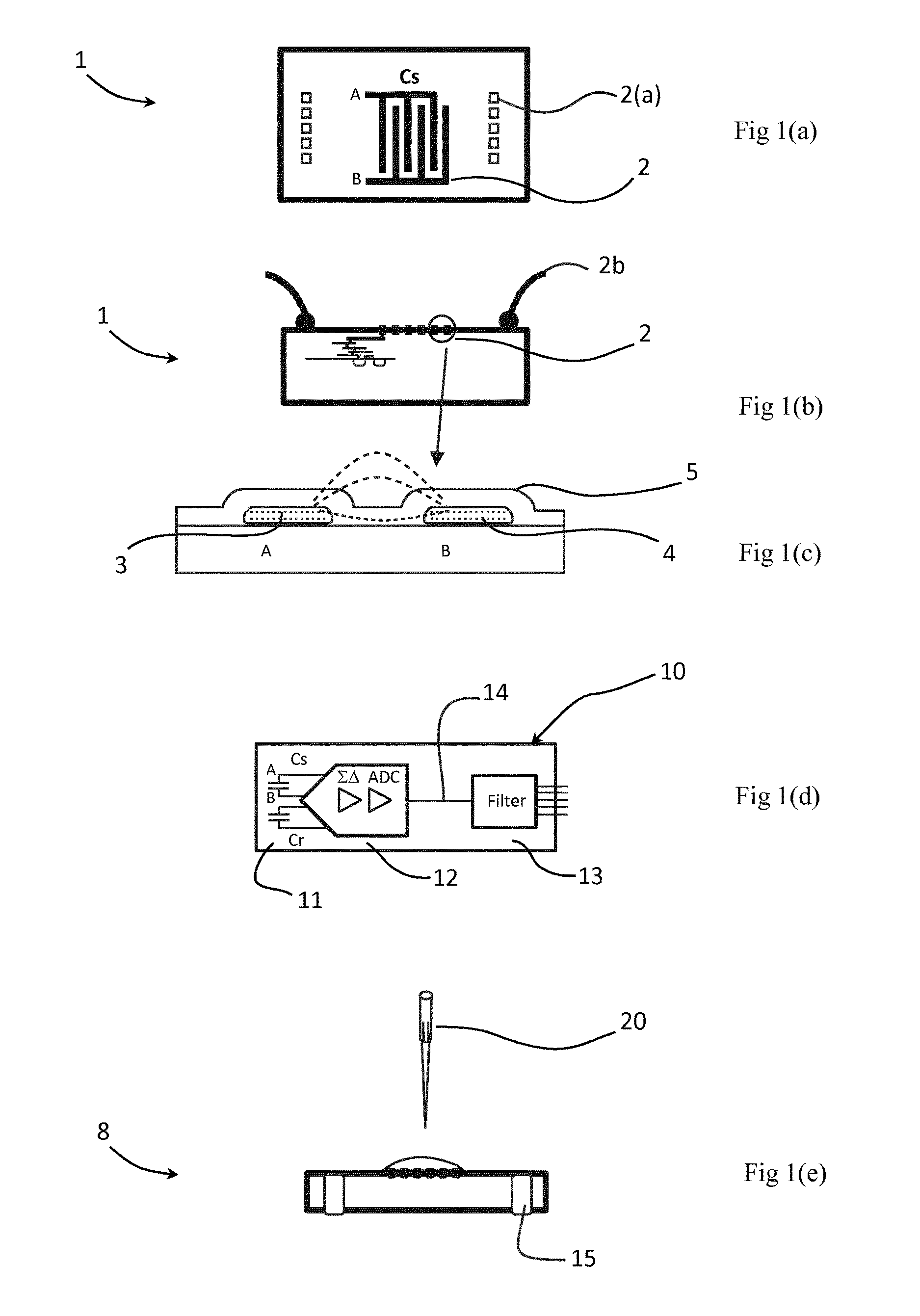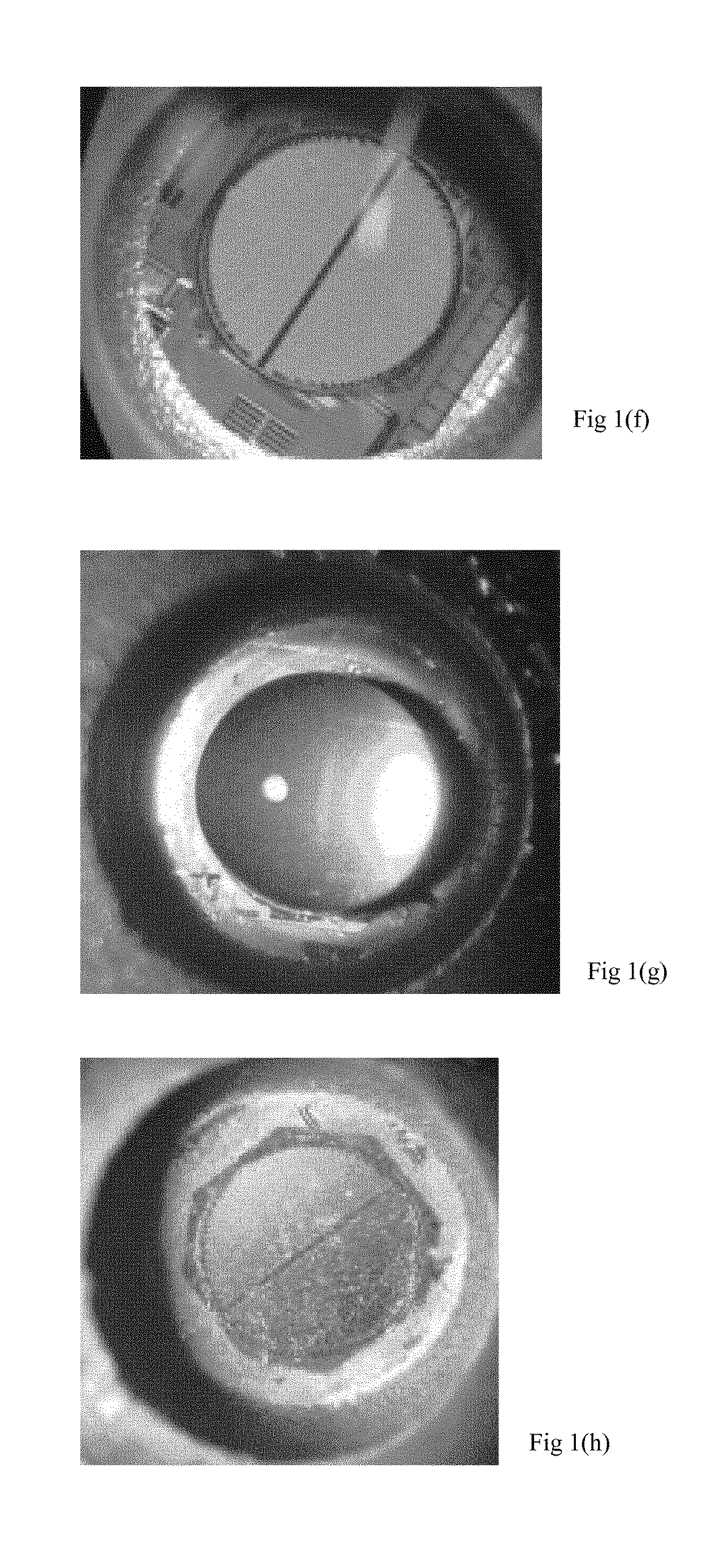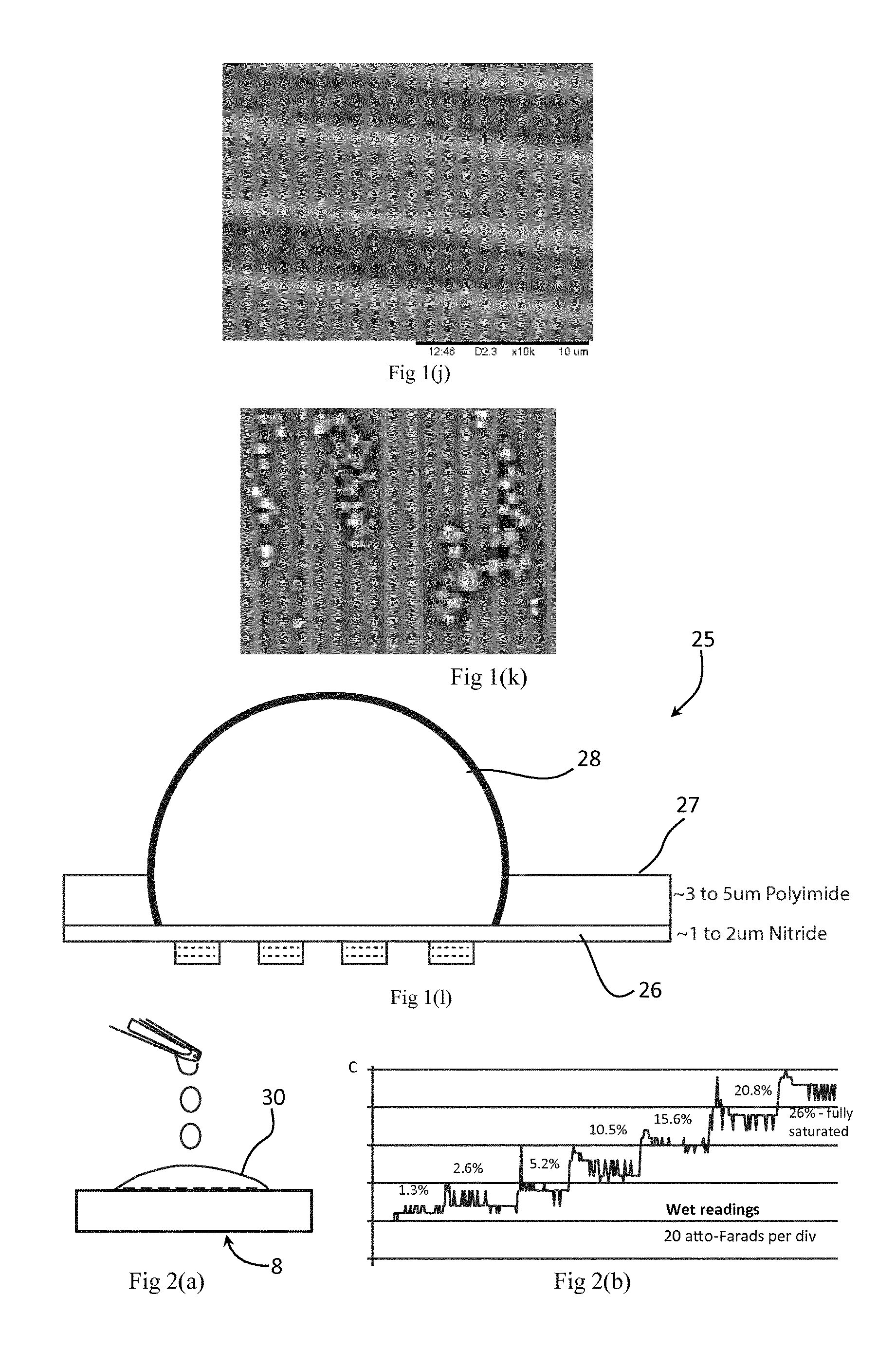A capacitive sensor and method of use
a capacitive sensor and capacitive technology, applied in the field of capacitive sensors, can solve the problems of large apparatus, inability to miniaturize, portability, and high-volume low-cost manufacturing, and materials are expensive and not readily available on high-volume low-cost standard cmos semiconductor technology, and may interfere with the measurement of analyte,
- Summary
- Abstract
- Description
- Claims
- Application Information
AI Technical Summary
Benefits of technology
Problems solved by technology
Method used
Image
Examples
Embodiment Construction
[0049]The invention will be more clearly understood from the following description of some embodiments thereof, given by way of example only with reference to the accompanying drawings in which:
[0050]FIG. 1(a) shows a CMOS semiconductor integrated circuit (IC) sensor of the invention providing inter-digitated capacitive electrodes; FIG. 1(b) shows a cross-section diagram of the CMOS IC; FIG. 1(c) shows a cross-section of two electrodes (A and B) of one of the capacitive sensors; and FIG. 1(d) is an electrical schematic of the sensing capacitor and a reference capacitor forming the differential front-end of a sigma-delta converter;
[0051]FIG. 1(e) shows a cross-section of a TSV version of the CMOS IC, with an analyte droplet dispensed on the sensor;
[0052]FIG. 1(f) shows a top-view photo of a circular sensor; FIG. 1(g) shows a 0.4 μl droplet on the sensor; FIG. 1(h) shows the sensor with particles on the sensor after droplet evaporation; and FIG. 1(j) shows a close-up SEM image (approx...
PUM
| Property | Measurement | Unit |
|---|---|---|
| thickness | aaaaa | aaaaa |
| diameter | aaaaa | aaaaa |
| length | aaaaa | aaaaa |
Abstract
Description
Claims
Application Information
 Login to View More
Login to View More - R&D
- Intellectual Property
- Life Sciences
- Materials
- Tech Scout
- Unparalleled Data Quality
- Higher Quality Content
- 60% Fewer Hallucinations
Browse by: Latest US Patents, China's latest patents, Technical Efficacy Thesaurus, Application Domain, Technology Topic, Popular Technical Reports.
© 2025 PatSnap. All rights reserved.Legal|Privacy policy|Modern Slavery Act Transparency Statement|Sitemap|About US| Contact US: help@patsnap.com



